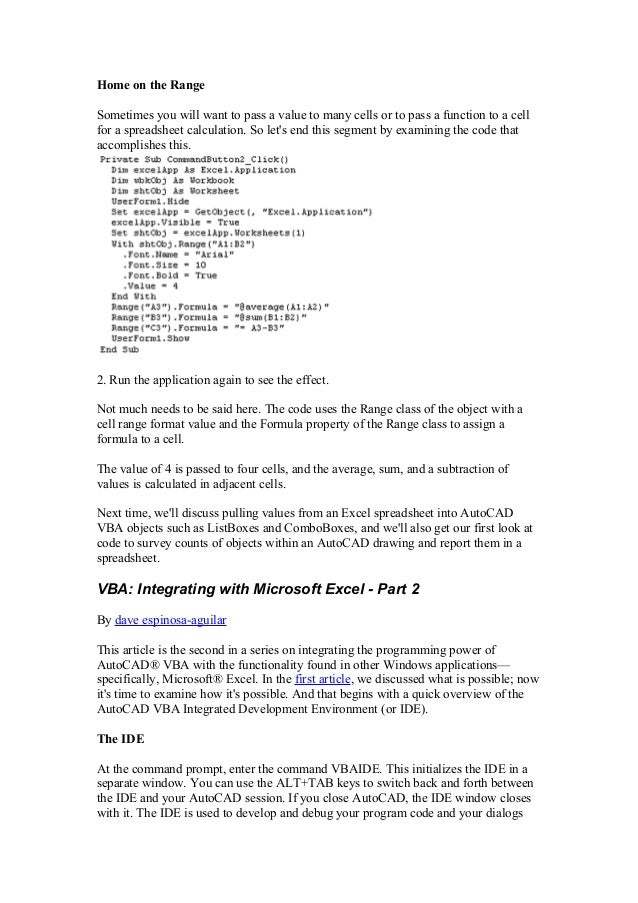Autolisp Autocad Ejemplos
Tutorial AutoLISP de AutoCAD para Principiantes Cada programa de AutoLISP debe ser similar a. Algunos ejemplos de seguridad de los nombres de variables son las. May 02, 2013 AUTOLISP Tutorial - Abel Moran - Ejemplo 01 - Duration: 20:21. Abel Moran 58,856 views. Autocad autolisp Door tutorial - Duration: 7:38.
Highlight the DCL code and press Ctrl+C, or right-click and click Copy. (defun C:HELLO ( / dclid ) (setq dclid (loaddialog 'hello.dcl')); Load the DCL file. (if (not (newdialog 'hello' dclid)); Initialize the dialog.
LISP Common Lisp, Scheme, xlisp and other lisp supporting stuff which could be useful for AutoLISP programmers. Design Issues for Foreign Function Interfaces A survey.
Autolisp Autocad Lt
(exit); Exit if this does not work. ) (startdialog); Display the dialog box. (unloaddialog dclid); Unload the DCL file. (princ) ). In the Visual LISP Editor, click File New File. In the new editor window, press Ctrl+V, or right-click and click Paste.
Click File Save As. In the Save-as dialog box, Save As Type drop-down list, select Lisp Source Files.
In the File Name field, enter hello.lsp. Browse to a location to store the LSP file and click Save. Note: Make sure the LSP file is saved to one of the folders in the AutoCAD Support File Search Path. Click Tools Load Text in Editor.

In AutoCAD, at the Command prompt, enter hello and press Enter. In Sample Dialog Box, click OK. The following explains line by line what the AutoLISP program does:. Line 1 – Defines a command named HELLO with a local variable of dclid. Line 2 – Loads the DCL file into memory with the loaddialog function. The loaddialog function returns a DCL identification number. You need this to identify the dialog in subsequent function calls.

Lines 3-5 – Initializes the dialog box with the newdialog function. The dialog box name and DCL identification number are passed as arguments. With other dialog boxes, you would also set up tile values, lists, and images.
This DCL example above uses a predefined tile named okonly, so you do not have to initialize the tile unless you want to override its default values. The okonly tile also has an action named donedialog assigned to it. If the user presses the OK button, AutoCAD passes the donedialog call to your AutoLISP application and ends the dialog. Line 6 – Control of the dialog is passed to AutoCAD for display with the startdialog function. Line 7 – Removes the dialog from memory after the finishes responding to it with the unloaddialog function. Line 8 – Exists the command quietly.
Line 9 – Ends the definition of the HELLO command. For the sake of simplicity, no error processing is included in this example. Note that the startdialog call remains active until the user selects a tile (usually a button) whose associated action expression calls donedialog.
The donedialog call can be issued explicitly by the tile. The donedialog call is also issued by the selected tile if its iscancel attribute is set to true.

Caution: In theory, the dialog box facility takes control of input at the time you call startdialog, but the operating system takes control when you call newdialog. This has no effect on writing programs. However, if you invoke these functions interactively (at the AutoCAD Command prompt), you must enter them as one statement. Enclose them within a progn or another function. If you do not, the interactive call to newdialog can freeze the screen. Calling newdialog and startdialog interactively can be useful during debugging.